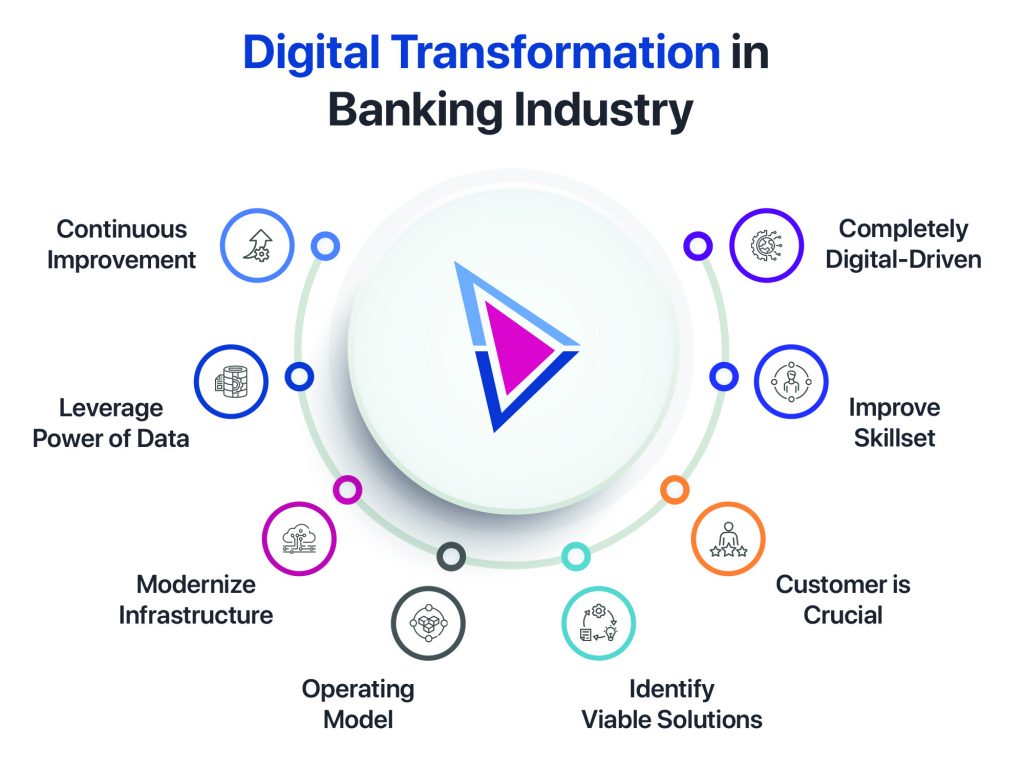There are 250 digital banks worldwide, including 20 percent in Asia-Pacific. 70% of these banks were established between the years 2016 – 2020. It is a telling statistic that makes a strong case for legacy banks to embrace digital transformation. Few learnings from the digital banks are already profitable – AiBank, MyBank, WeBank (China), Jibun, Rakuten, Sony (Japan), Kakaobank (Korea), and Paytm Bank (India).
Learning from the new-age banking institutions
While companies with diverse domain expertise support most digital banks share a few commonalities – strong brand recognition, established customer base, scalable technology, data-driven cultures, agile governance mechanisms, and a product sequencing approach that balances incomes with costs.

Need for digital transformation in Financial Services
Value Structure
As the demographic shifts globally with more digital natives joining the workforce and earning incomes, incumbent banks are discovering newer ways to define “value” and revamp engagement structures that capture and harness it. With the mainstream popularity of omnichannel banking growing, incumbent banks are experimenting with various business models and ecosystem partnerships. However, the path to ramping up digital transformation is long-drawn. It comes with specifics – from deciding the product build (front) and technology stack that supports (back end), agreeing on operating models, establishing risk management processes, and mobilizing a go-to-market.
Technology Enablers
To stay competitive in the industry, financial institutions continually question the viability of their core and supplemental technologies. Crystal gazing for the future includes mapping the emergent tech. (AI, ML, 5G, IoT) and how these new-age disruptors fit into the bank’s longer-term strategy. As the dynamics of migrating digital assets and data to new platforms is a recurring feature at most banks, so is the need to firm up their digital transformation mandates. The considerations of flexibility and sustainability will always present themselves as banks formalize how their end-state enterprise architecture will look like. Whether technology is understood or embraced, digital transformation in financial services is a constantly changing and high-stakes endeavor.
Increased competition
A few years ago, when Netflix jumped into the business of developing original content, they said, “for us the aim is to become HBO faster than HBO can become us .”Similarly, today’s banks have to embrace digital transformation at never-before-seen speeds. For digital giants with a strong advantage across customer access, brand recognition, scale, network effect, and formidable customer trust, the finance industry presents a juicy opportunity – a sizable revenue pool, high returns on equity, and capital-intensive approaches. Told another way, hyper-competition in the finance industry is expected only to grow. Ergo, digital transformation is not about “if” but “when.”
Drive to Scale
Size in today’s business world is hugely coveted. Look at the top companies – Walmart, Amazon, Apple, Apple – their employees, market cap, and geographic presence. Understandably, everything is about scale. Operating at lower unit costs, investing more prominent in technology and marketing, and expanding their customer databases are all edges that come with sheer size. Digital transformation in the financial industry, likewise, is about scale. Here is a proof point. Considering pre-COVID numbers, about the world’s top two banks. With an $11B technology budget, JPMorgan spends 50% of it on disruptive technology, and Bank of America, with a $10B tech overlay, consumes 30% on new tech initiatives.
End-to-end Customer Journey
Most banking customers (wholesale, corporate lending, or retail) are wary of friction-heavy transaction processes. This challenge comes from various corners – legal & risk architecture, P&L requirements, and legacy IT systems. Eliminating pain points prompts banks to start mapping end-to-end digital journeys. Subsequently, routine tasks (like onboarding scenarios, KYC requirements, account opening, document management, and loan processing workflows) are simplified as financial institutions leverage the mountains of customer data that lie unharnessed in their existing systems. The need to accelerate digital transformation will only rise as banks make customer pain point elimination their top agenda.
Conclusion
Post-Pandemic, the renewed waves of economic recovery are coinciding with macro forces – increased smart device usage, faster connectivity, and high demand for top-notch user experiences. As the number of digital-only banks grows, along with BaaS (banking as a service), more traditional financial institutions will step up their digital transformation initiatives.











